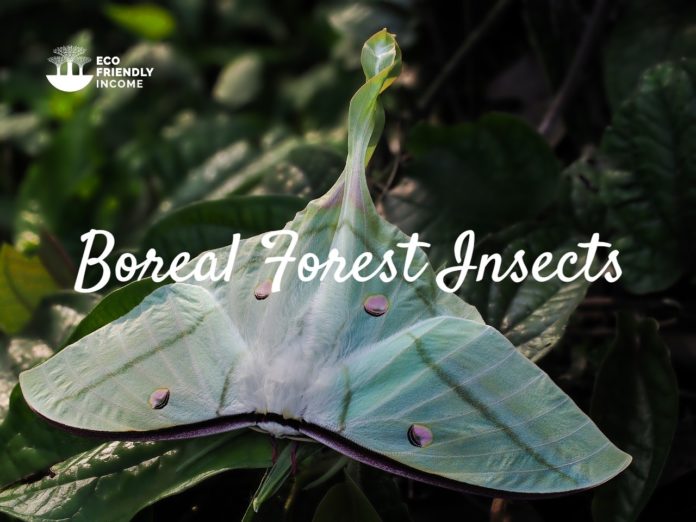The world of boreal forest insects still holds many secrets. It’s a subject where even amateurs can still make discoveries.
Today, an estimated 32,000 species of insects are found in this biome, with many still undiscovered.
Insects have managed to adapt to some of the most inhospitable environments on the planet, the cold regions of the boreal forest are no exception.
Quick links to sections of this guide.
What are Boreal Forests?
The boreal forests are the largest terrestrial biome on the planet. They are vast coniferous forests spanning across the northern hemisphere.
You can find them from eastern Canada all the way through Russia and Northern Europe.
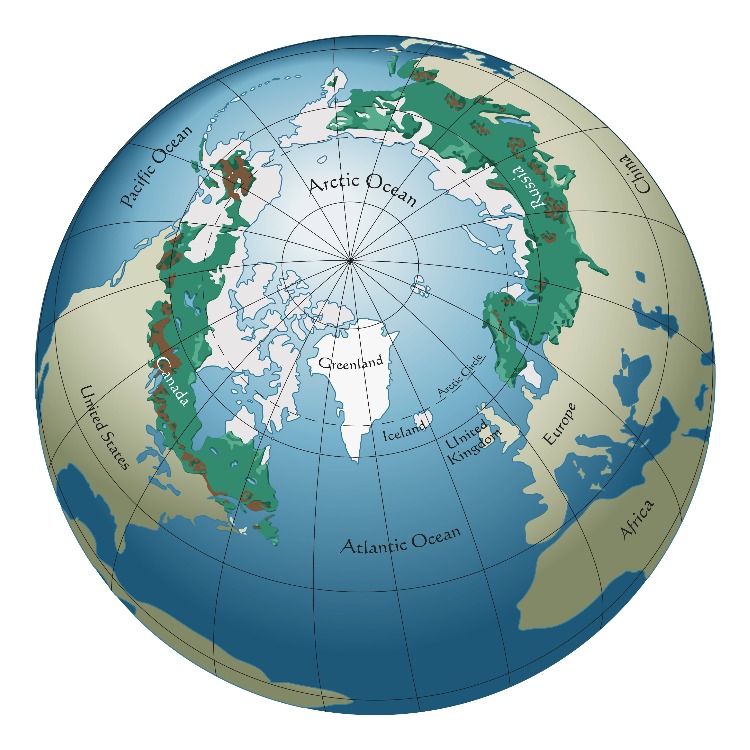
The Fascinating World of Insects
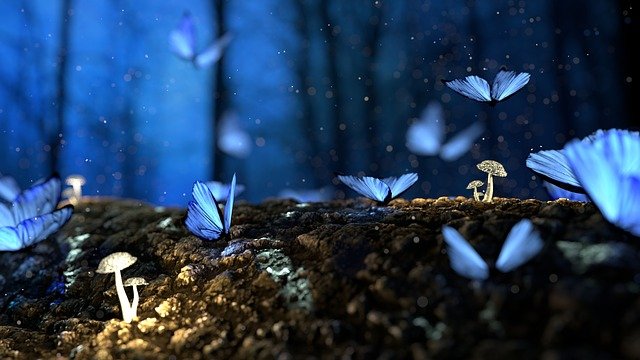
Insects are fascinating, most of us have had a phase of our childhood where we’d run around catching all sorts of bugs.
They’re so alien to us, some species can completely change their appearance, others work in near-perfect unison under a hive mind.
Some of us have never left this phase of amazement, but others have forgotten their fascination and are recently just getting back into it.
My case is the latter, I have been amazed by plants lately, but while observing plants closely, I couldn’t help but also notice insects.
This attention towards plants in a way has re-born my interest in insects.
This guide or encyclopedia isn’t a life’s work but is an attempt at raising more attention towards insects, especially those of the boreal forest.
The boreal forest is my playground, after all, this is where I work, that’s the underlying reason why I focus my research on this biome.
I hope that this guide can feed the curiosity of others living in the Boreal forest. While getting deeper in the research, I’ve shed light on a variety of fascinating insects that I had seen before but couldn’t identify.
I hope this can do the same for you!
Insect Taxonomy
Insects, like all living organisms, are grouped together into genera that have different species. For example, a luna moth’s scientific name is Actias luna, actias being the genus and luna being the species.
The taxonomy of all living organisms consists of many different categories that track common ancestry.
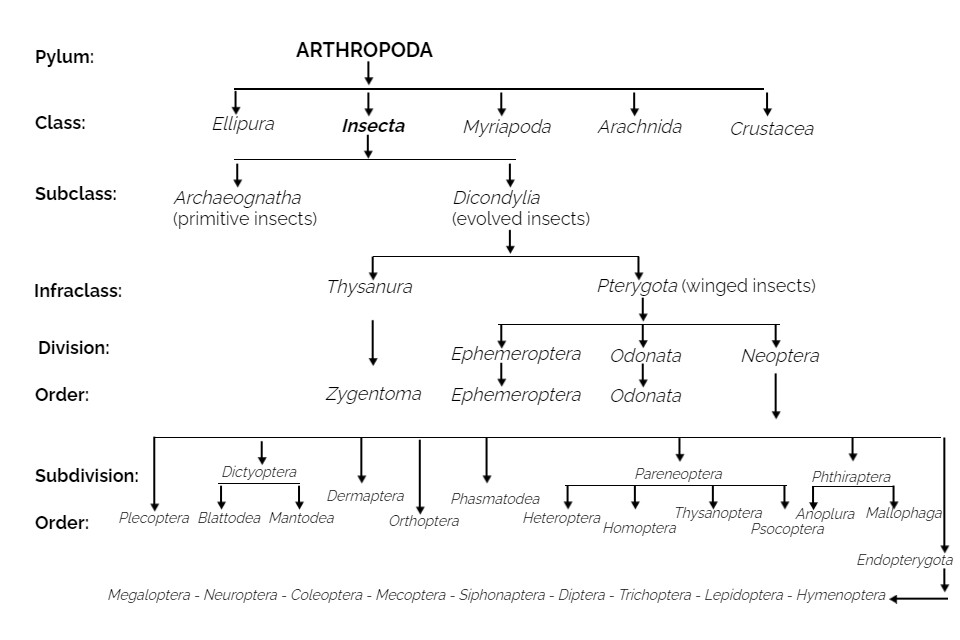
Just to give an example of the grand scale of this, for the Luna moth, Actias Luna, you can’t find the genus actias in this graph, right?
That’s because it’s even further down the graph, we can find the order it is from though. The majority of butterfly-like insects fall into the order Lepidotera (bottom right), which comes from the Neoptera Division.
Order Lepidoptera alone describes up to 180,000 different species, 126 families, and 46 superfamilies. It represents 10% of all total described species of living organisms, which makes it one of the most known and widely recognized insect orders in the world.
What is an Insect and What is Not?
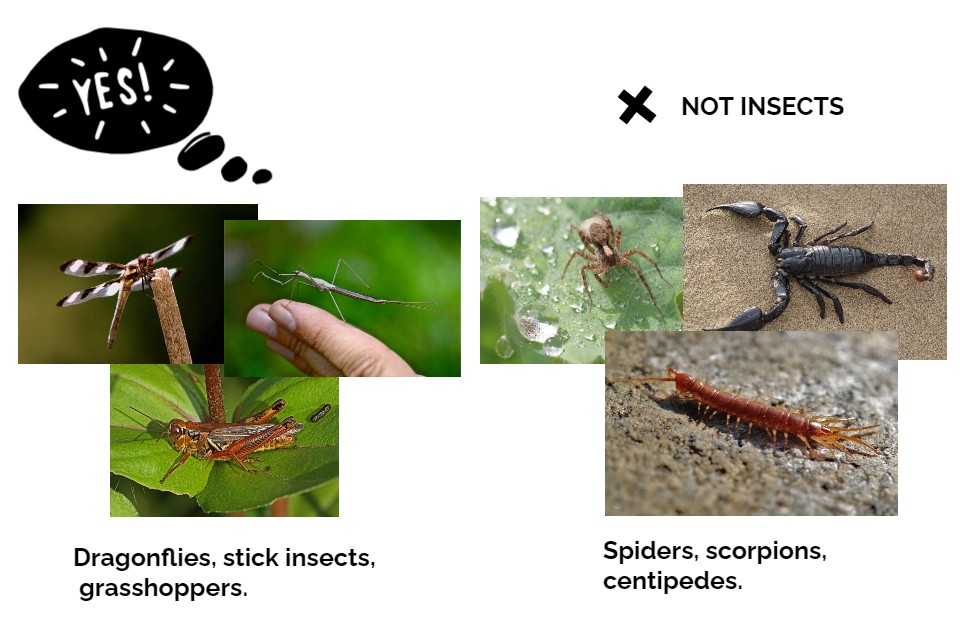
When we think of insects, we tend to classify everything as one. Would you say a spider is an insect? What about a scorpion? A millipede? All three of these are actually not insects!
There are characteristics that distinguish them from true insects. For example, all insects have 6 legs or a variation of pairs of legs and arms that are equivalent to 6.
Spiders don’t have 6 legs, they have 8, and are not technically insects, they are part of the class Arachnidae.
Scorpions are actually also class Arachnidae!
Milipedes generally look like worms, with many legs and a hard exoskeleton. They are part of class myriapoda.
Insects are a class within the Arthropda phylum. The best word to describe all the ‘insects’ we commonly misname is Arthropods:
Invertebrate animals with an exoskeleton, a segmented body, and paired jointed appendages.
But for the sake of simplicity, we might still refer to non-insect species in this guide.
What Kind of Insects Live in the Boreal Forests?
In the boreal forests, you can find insects like ants, dragonflies, bees, moths, fireflies, ladybugs, cicadas, waterbugs, and grasshoppers.
It’s pretty much like anywhere in the world, except insects here have adapted to survive the long winter seasons.
While the diversity of insects in the boreal forest is not that high, the sheer mass of insects of incredibly huge.
Now let’s get to it, what are the most common and interesting boreal forest insects?
Order Odonata
The word “odonata” in Latin means: strong teeth found on the mandibles of most adults. The order consists of predatory insects such as dragonflies and damselflies.
Their larvae and adults are aquatic and insectivores.
After emerging, adults go through a period of sexual immaturity that lasts from 7-30 days, depending on the species, before developing their definitive colors.
Additionally, odonatae wings are shinier during this period. They leave their aquatic environment during this stage to come back later when they’ve reached maturity.
From there, mating and spawning follow. When mating, the male holds the female by using the extremity of its abdomen. We often see this by lakesides, two dragonflies flying around in a knot.
Laying of eggs has some differences depending on the species, some lay directly on water, others hide them in moss, mud, or even inside dead plant stems.
The most recognizable dragonflies & damselflies in the Eastern Canadian Boreal Forest:
Boreal Forest Dragonflies & Damselflies – Suborder Anisoptera & Zygoptera
Order Orthoptera
Orthoptera in Latin means straight wings. It consists of insects like grasshoppers, crickets, and locusts.
The most well-known characteristic of insects in this order is their ability to jump great heights and distances.
That’s thanks to their highly developed back femurs that spring them in the air.
Species within this order like crickets and locusts eat a large quantity of vegetation, and can sometimes become real pests.
Acrididae for example, love to sing. We hear them especially at night or during hot summer days.
Their wings are well developed, sometimes with colors, especially for locusts.
They camouflage well in their environment to hide from potential predators.
Let’s look at some of the hardiest species that have adapted in the boreal forest:
Boreal Forest Grasshoppers – Suborder Acrididae
Order Heteroptera
Heteroptera are insects that often have a broad, shield-like shape to their thorax.
Insects in order heteroptera are typically characterized by their flattened bodies, which allows them to move easily through the air.
They also have piercing-sucking mouthparts, which they use to feed on plant sap.
There are too many to list here, which means the species below will represent their suborders.
Some boreal forests insects in the heteroptera order are:
Order Homoptera
The order Homoptera includes cicadas, aphids, and hoppers.
These insects are characterized by their sucking mouthparts, which they use to extract sap from plants.
They typically have two pairs of wings, which are membranous and often transparent. Many species in this order are pests, feeding on the sap of crops and other plants.
Cicadas – Suborder Cicadidae
Order Megaloptera
Megaloptera are a group of insects that are related to dragonflies and damselflies.
They are a primitive group of insects that have been around for a long time.
Megaloptera have two pairs of wings and they are usually quite large. They can be found near water, where they catch small fish and other aquatic creatures.
Order Neuroptera
Order Neuroptera includes lacewings, antlions, and dobsonflies.
They are characterized by their four membranous wings, which are usually clear or lightly tinted.
Their antennae are very long, and many species have a “club” at the end.
Neuropterans typically have a long, slender body, and most are predators.
Order Coleoptera
The order Coleoptera includes all beetles.
This massive order of insects counts numerous families, they are the most diverse of all boreal forest insects.
Beetles are generally characterized by their hard exoskeleton, chewing mouthparts, and two pairs of wings that are hardened and meet in a straight line down the back.
You can find them in a wide variety of habitats, and many are important pests or beneficial organisms.
Order Mecoptera
Order Mecoptera includes the Antlion Flies, Scorpion Flies, and Hangingflies.
These insects are characterized by their long, thin antennae, and their four membranous wings, which are often held out like a sail.
They typically have a long, slender body, and a small head.
Their larvae are often called “mecopterans” or “hangingflies”, because they often hang from vegetation by their posterior prolegs.
Order Siphonaptera
Order Siphonaptera includes fleas.
Fleas are small, flattened, wingless insects that are usually less than 1/8 inch long.
They have piercing-sucking mouthparts and their bodies are covered with bristles.
Fleas are very agile and can jump long distances.
They are often found on the bodies of animals, where they feed on blood.
Order Diptera
There are over 150,000 different species of Diptera, which is the order of insects that includes all true flies.
These insects are characterized by having two wings, as opposed to the four wings of most other insects.
The name Diptera means “two wings” in Latin. Diptera can be found all over the world, and they come in a wide variety of shapes and sizes.
The smallest species are less than 1 millimeter long, while the largest can grow to be over 12 centimeters long.
Most Diptera are scavengers, feeding on dead animals or plant matter. However, there are a few species that are predators, and others that are parasites.
Order Trichoptera
The order Trichoptera includes caddisflies, which are insects with two pairs of membranous wings.
The wings are held roof-like over the body when at rest.
The abdomen is cylindrical and tapered at the end. The larvae of caddisflies live in water, gathering bits of organic matter to build a protective case around their bodies.
Order Lepidoptera
There are over 160,000 species of Lepidoptera.
They are divided into two main groups: Butterflies and Moths.
- Butterflies are brightly coloured and have thin wings. They typically fly during the day.
- Moths are usually duller in colour and have thicker wings. They typically fly at night.
Butterflies and moths have a proboscis, or a long, coiled tube, which they use to suck up nectar from flowers.
Lepidoptera undergo complete metamorphosis.
This means that they go through four distinct stages in their life cycle: egg, larva, pupa, and adult.
The eggs are small and round.
The larvae, or caterpillars, are often very colorful and have a lot of spikes or hairs.
The pupa is a transitional stage between the larva and the adult. It is often very colorful and has a hard shell.
The adult is the final stage in the life cycle. It is typically the most colorful and has the biggest wingspan.
Order Hymenoptera
Order Hymenoptera includes ants, bees, wasps, and sawflies.
They are distinguished by their two pairs of membranous wings, which are usually clear.
A hymenopteran’s body is divided into the head, thorax, and abdomen.
Their antennae are long and threadlike.
The mouthparts are modified for sucking liquids and chewing.
Hymenopteran larvae are legless and grublike.
Hunting for Insects Using Light
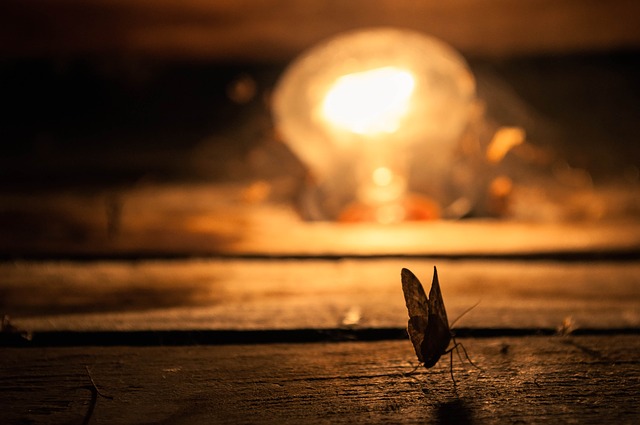
We’ve all seen insects fly around a light at night, mesmerized by the light, they can fly around it until they die.
Why would they do that? Seems like they’re kind of stupid but when you think about it, there’s a good reason why that happens.
For millions of years, nocturnal insects haven’t had any light source other than from the stars and the moon.
It was not until humans arrived that sources of artificial light appeared.
Back then, moths, for example, would use the moonlight as a sort of guidance. They’d fly keeping the moon at a certain angle from them.
But artificial light is much closer to them than the moon, which means that when they use it as a guiding light, keeping it at an angle from them, they end up flying in circles.
It’s in their genetics to use lights as guidance, so you can see why artificial lights really mess with their “GPS”.
Street Lights, Building Lights, Alley Lights
Modern cities are now filled with lights, it’s easy to just walk up to one at night and find a variety of insects attracted to it. White light with UV is especially more effective than others for this.
So if you wish to hunt for nocturnal insects such as moths, and beetles, it would be quite effective to set up a circuit of spots you know with lamps that attract many insects.
This way you can drive or ride your bike from one to another to catch all sorts of insects.
Since these lights are usually out of reach, you must bring a butterfly net, and some storage containers to place the insects.
Remember that you’d be doing this late at night, which can be dangerous, try to do this at least with 2 people to prevent risk of anything happening.
Conclusion
This guide just touches the tip of the iceberg that is boreal forest insects. There are so many species that one guide could never possibly contain all of them.
At least this gives the curious a good reference to the families and orders of insects found here in my home.
As a tree planter, I love the boreal forest, and I’m curious about pretty much anything I see while working there.
Insects for me have become a whole new world of interest that can pique my curiosity on a day-to-day basis.
I hope this guide becomes useful for other curious nature lovers like me!
Cheers.
Want more? Check out the Boreal Encyclopedia for more wonderful facts.
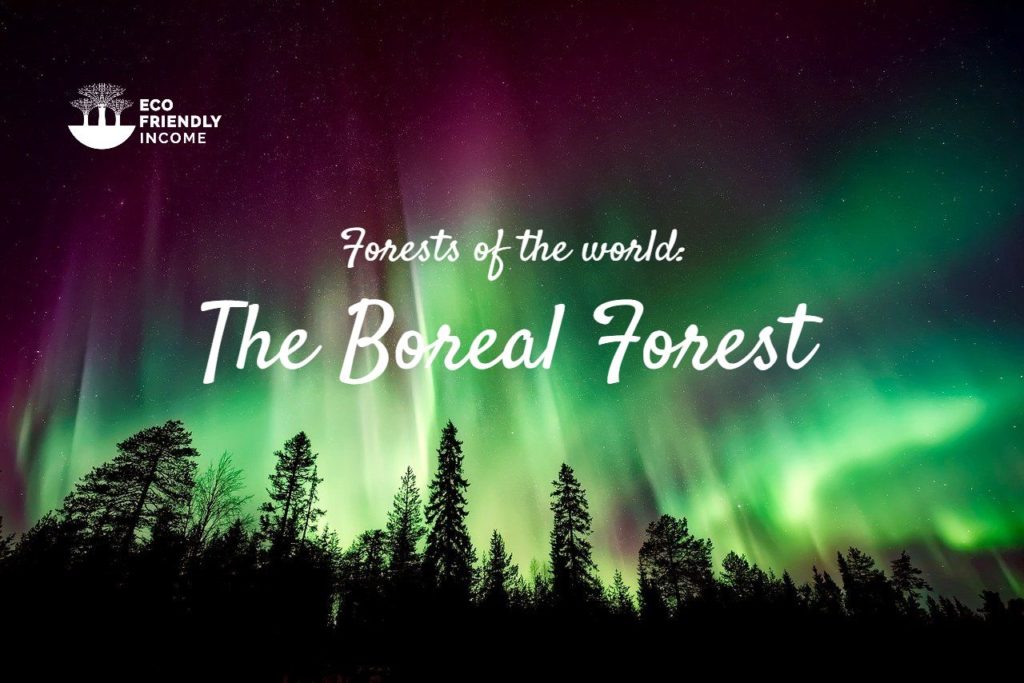
Would You Like to Add Insects to the List? Leave a Comment Down Below!

